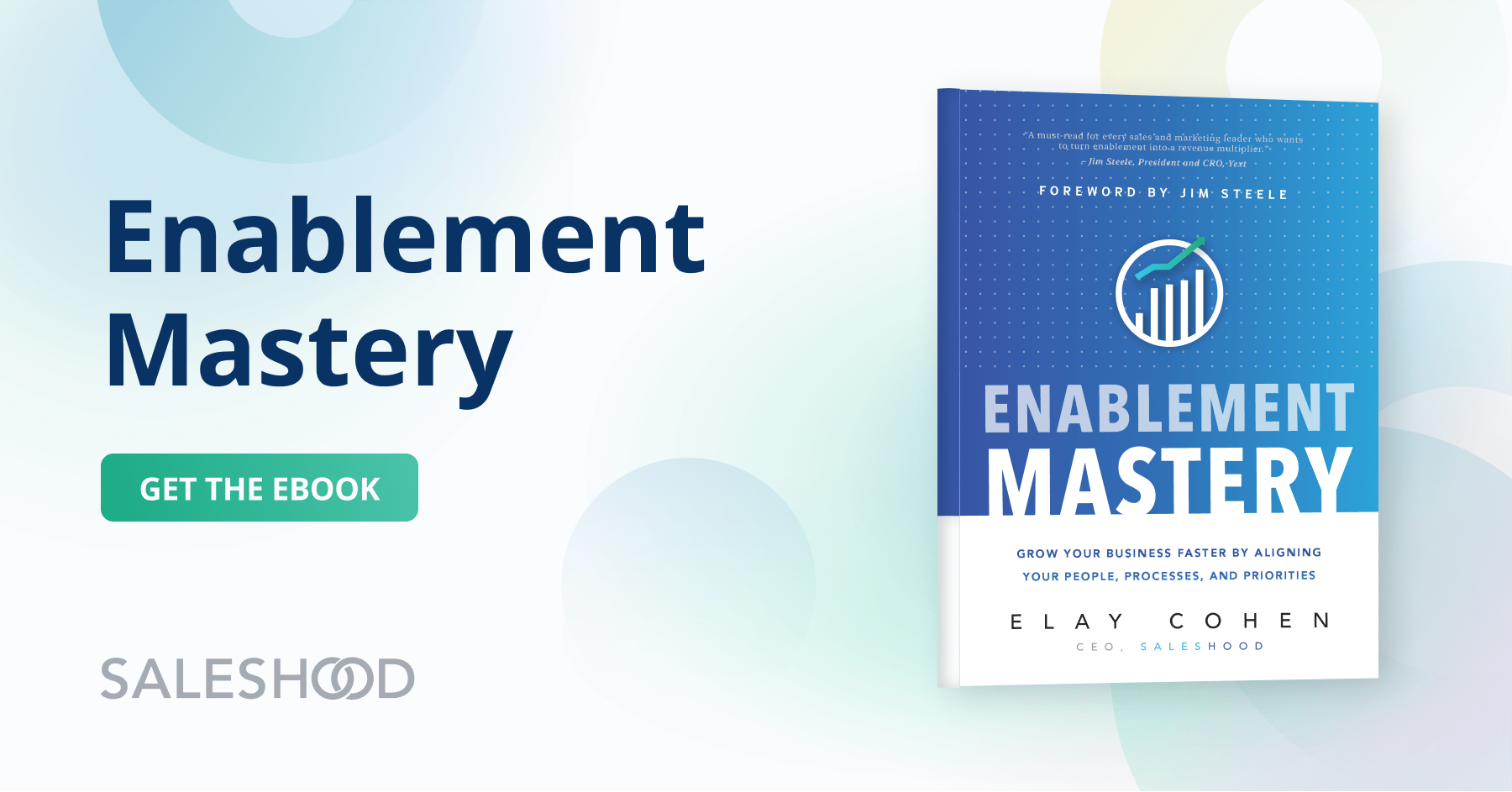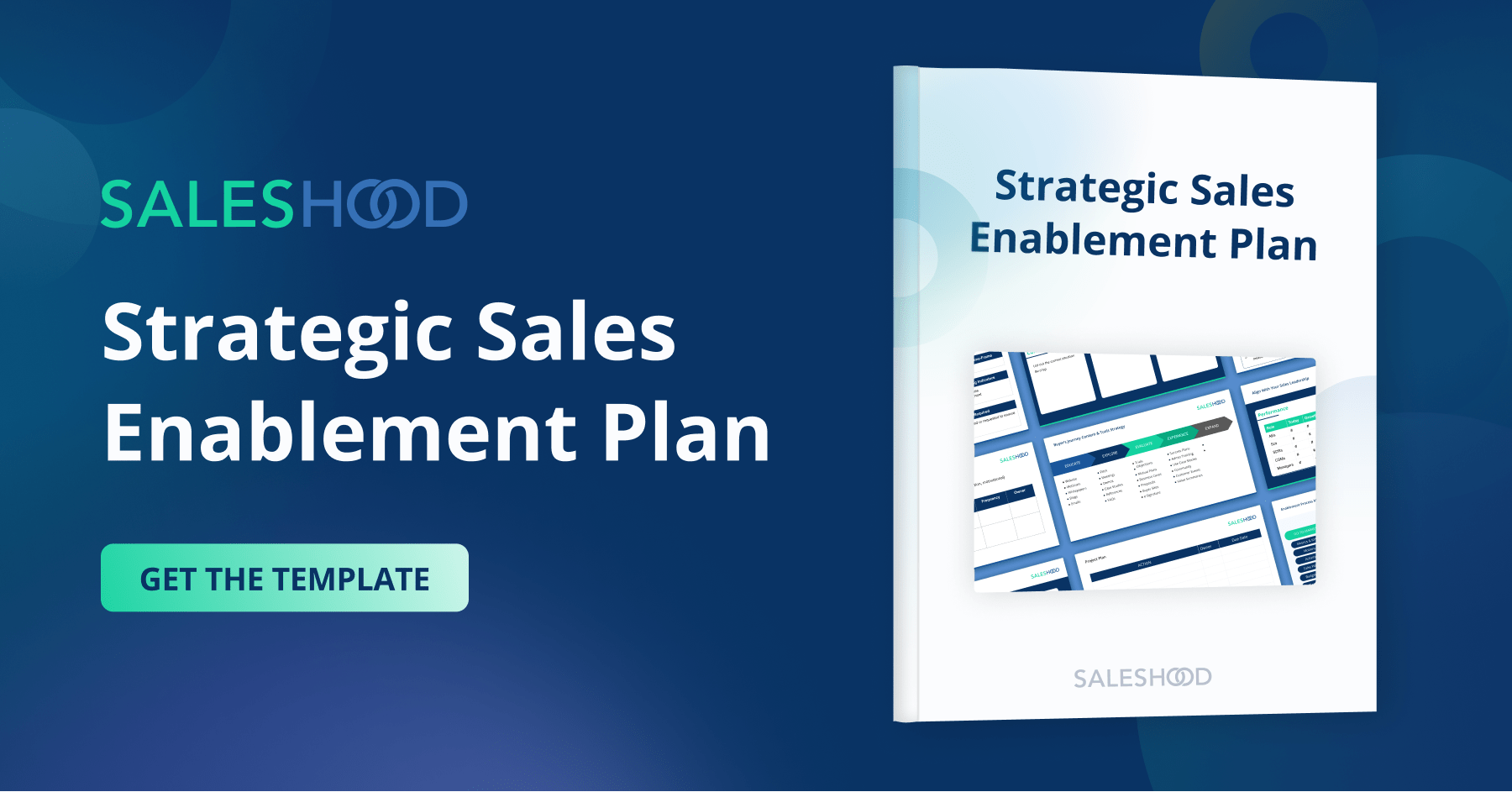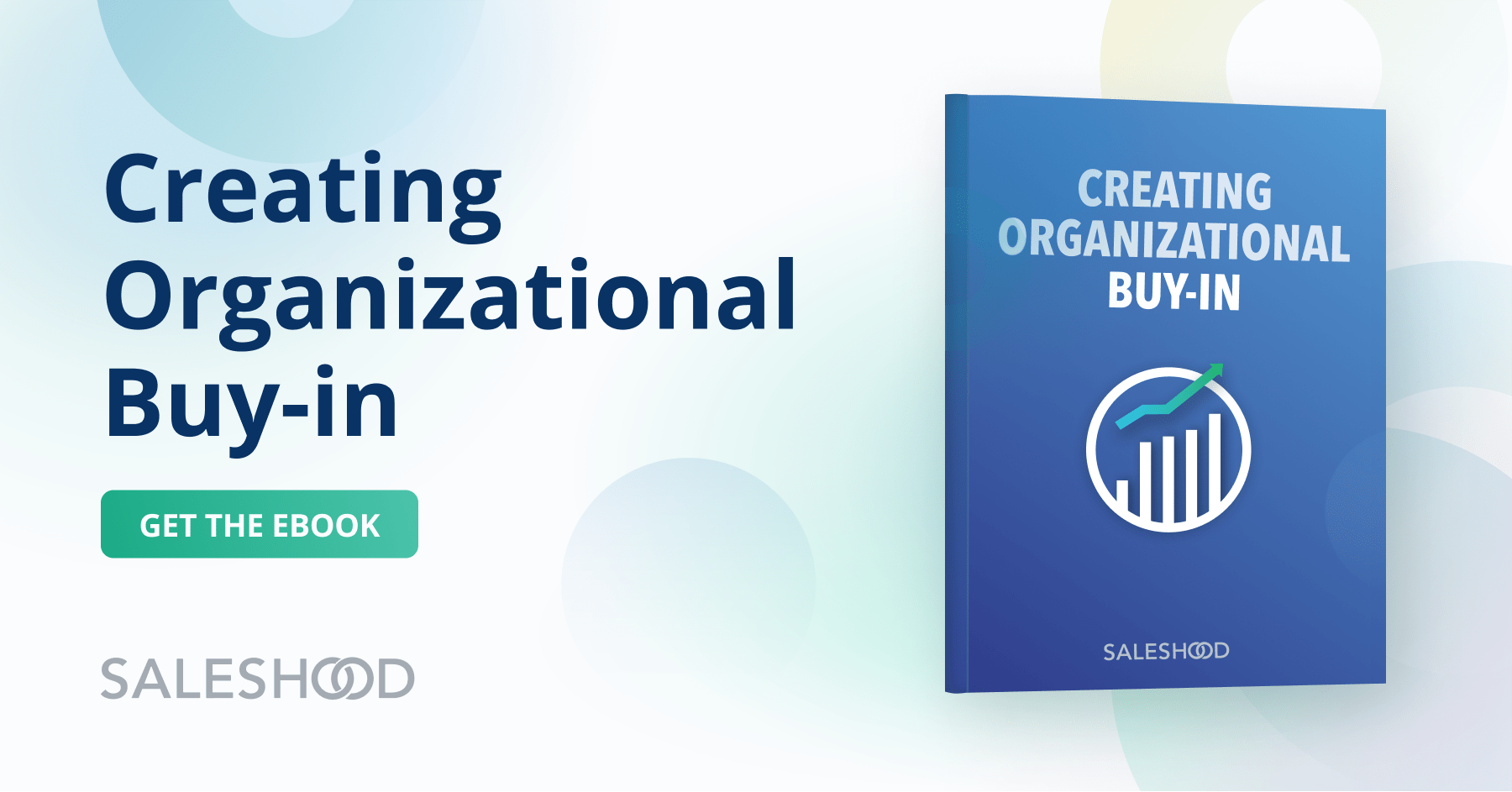Alignment between departments is essential for an effective sale enablement program.
Companies with aligned sales and marketing teams can provide much more marketing-sourced revenue and significantly higher sales win rates.
That number can also be further improved if operations, human resources, and product teams participate in the sales enablement process as well, each adding their own unique element to the sales enablement process.
All the above being said – the sales enablement success is also hugely dependent on the buy-in from the company’s senior executives. If the company’s senior executives are on board your sales enablement efforts have the chance to make an exponential impact – if not – it may be difficult to get the cross-department collaboration you need to succeed.
Organizations that have achieved success in the execution of their sales enablement strategy emphasize the need for executive buy-in via creating an internal business case for sales enablement.
We’ve prepared a list of useful tips that will help you to develop an excellent business case for your sales enablement program and encourage executive buy-in and prioritization.
Establish a Clear Definition and Range of Sales Enablement
It may happen that the definition and range of sales enablement will be understood differently by everyone.
If multiple people are unclear about the goal, and their part to achieve the collective goal – then it will be nearly impossible to achieve the desired outcome.
For this reason, it’s crucial to establish one definition of sales enablement that will be the same for the entire team, and how each team member individually adds to the process.
Furthermore, before presenting the business case for your executives, a clear scope of work should be presented including all the personnel, responsibilities, best practices, goals, and metrics that should be set up.
With no straightforward definition, clarity of cross-departmental roles, and alignment to the goal – sales enablement is not likely to provide the desired results.
Create a Maturity Model
It is definitely worth creating a maturity model, because, in this way, people can correctly understand where they are with their enablement process.
What is more, they will see what direction they should take and what they’re supposed to do to meet all the expectations.
There doesn’t have to be just one model – you can create more stages, making your team achieve small successes on their way to reaching the highest level.
Evaluating the present state is vital because it provides you with a baseline to build an adequate enablement strategy, and shows you what the weak points that need to be worked on are.
Thanks to a maturity model, you can create a scalable platform and always quickly check what the next step that should be taken is.
Prepare a Sales Enablement Charter
It’s advisable to prepare a charter that will represent your perception and aims of the sales enablement strategy.
It should include such elements as:
- The main goal of the sales enablement tools being applied, aligned with the overall business aims
- Stakeholders of sales enablement along with their appropriate roles
- Primary functions and responsibilities for every stakeholder
- Your audience: who is going to be affected by the sales enablement process
The charter should prove useful in establishing the right tone for your business case.
Every team participating in the sales enablement strategy should be aware of what their involvement is right from the very beginning. This way – you’ll prevent them from getting off-track.
Make the Business Strategy Easy to Understand
The previously mentioned maturity model must be aligned to the business strategy and the existing practices of the sales forces if you want the whole process to be successful.
The leaders of a sales enablement team need to reach out to numerous functions – marketing leadership, product teams, sales leadership – and if it’s possible – learning and development groups, as well as IT and HR.
All these groups should be included to achieve a holistic understanding of the entire business strategy.
Thanks to pairing the sales imperfections discovered due to the maturity model with the aims of the sales organization within the business strategy, sales enablement leaders can start building an effective enablement business case.
Think About Your Success Vision and It’s Business Effects
Keep in mind that the c-suite tends to look ahead to the future.
If you want to impress them with your initiative, you should present the potential effects of the sales enablement tools on their business aims.
Don’t go too far though – stay realistic to align your enhancement suggestions to the maturity model in a credible way.
Take into account that usually, everything takes more time than it was originally expected in the first place.
Concentrate on the practices in your lane of control, and openly mention other stakeholders who’s support is necessary to the project..
Apart from that, you should present the performance measures and data points that will show the leading signs of success in year one.
For further years, explain the lagging success indicators and relate them to your business aims.
Remember that without making it clear how the results will be measured, the executives probably won’t be interested in your sales enablement plan.
Present Your Business Case to the Stakeholders
While presenting your business case to the stakeholders, remain concise, clear, and on-point.
It is essential to carefully align sales enablement goals with present goals and initiatives so that the executives can easily envision and accept your enablement program.
A recommended presentation is supposed to include:
- the opportunities to grow thanks to sales enablement
- the comparison of the present state with the maturity model
- the sales enablement charter prepared for your organization
- the future state, with year one aims and business influence (remember about alignment to corporate goals)
- the implementation methods and the necessary budget
- a concise summary
Keep in mind that the stakeholders may express some common concerns, including minimal budget and external expenses.
Apart from that, they are likely to ask if they will have enough return to justify the costs.
You should work closely with the vendors’ sales enablement team because, in this way, future success can be predicted more easily. When you have that, you need to apply it to your business case.
As an experienced sales enablement team, we are ready to help you to establish the best business case possible. Contact us for more details!



